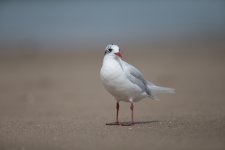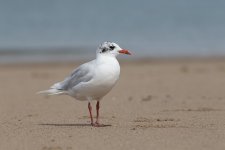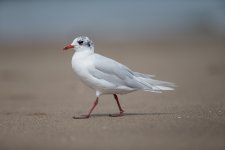Hi all! Was hoping for some desperately needed help. I recently upgraded from the 7D to the 1DX. I'm pairing the 1DX up with my 400mm f/4 DO lens for handheld shots...same as what I used for the 7D with great success. After a few thousand shots I’m noticing that most of my flight shots and shots in general are rather soft and blurry. Here’s a typical example:
http://jgalicki.smugmug.com/Bombay-and-Prime-Hook-DE/i-TXQtsLp
I always shoot in Aperture Priority Mode normally at f/5.6….in some cases I had great light so I kept the ISO to 100 and also moved it to Auto as well to get a feel for how the ISOs are automatically generated per different conditions. With my 7D I never went above ISO 800 due to the noise generated, so getting a feel for what I can do with 1DX which will be much better I hope. After reviewing the information for most of my photos I thought found my problem….almost all shots (including flight and song birds) were generated at slow shutter speeds such as 1/250, 1/500 or 1/640. With my 7D at similar light and ISO settings, I was able to get 1/1000 and way above as generated through Aperture Priority mode for flight shots….this 1DX is obviously working very different. In order to compensate and stay in Aperture Priority mode, I've now bumped up the ISO to 800+ and set the minimum shutter speed to be 1/250 (highest possible setting) but still getting slow shutter and softness.
All that said, what would the forum recommend I do in order to get better/crisp shots of birds and birds in flight for the 1DX with Aperture Priority? I'd like to get at least 1/1600 for flight shots and certainly higher speeds for perched and preening songbirds. I realize I can directly control in TV or Manual, but being stuck to either mode isn't conducive for me with general bird photography in the field.
Thx in advance!
Josh
http://jgalicki.smugmug.com/Bombay-and-Prime-Hook-DE/i-TXQtsLp
I always shoot in Aperture Priority Mode normally at f/5.6….in some cases I had great light so I kept the ISO to 100 and also moved it to Auto as well to get a feel for how the ISOs are automatically generated per different conditions. With my 7D I never went above ISO 800 due to the noise generated, so getting a feel for what I can do with 1DX which will be much better I hope. After reviewing the information for most of my photos I thought found my problem….almost all shots (including flight and song birds) were generated at slow shutter speeds such as 1/250, 1/500 or 1/640. With my 7D at similar light and ISO settings, I was able to get 1/1000 and way above as generated through Aperture Priority mode for flight shots….this 1DX is obviously working very different. In order to compensate and stay in Aperture Priority mode, I've now bumped up the ISO to 800+ and set the minimum shutter speed to be 1/250 (highest possible setting) but still getting slow shutter and softness.
All that said, what would the forum recommend I do in order to get better/crisp shots of birds and birds in flight for the 1DX with Aperture Priority? I'd like to get at least 1/1600 for flight shots and certainly higher speeds for perched and preening songbirds. I realize I can directly control in TV or Manual, but being stuck to either mode isn't conducive for me with general bird photography in the field.
Thx in advance!
Josh






